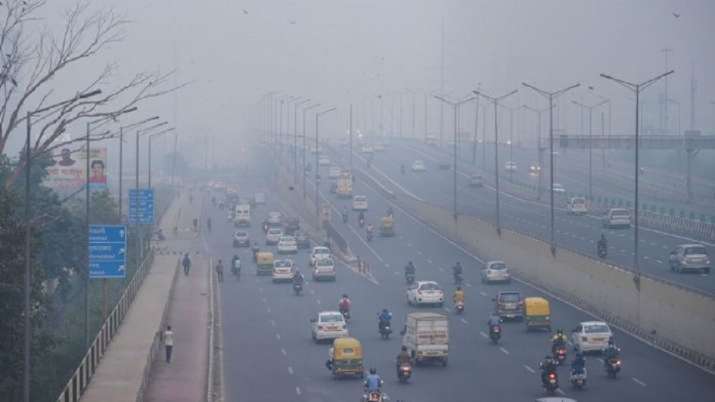
It said that low wind speed and low mixing layer height were preventing dispersal with moderate stubble infiltration.
The air quality in the national capital remained in the ‘very poor’ category on Sunday, but the contribution of stubble burning to Delhi’s air declined by two per cent, officials said.
The forecast body of the Ministry of Earth Sciences SAFAR said the city’s air quality index (AQI) was recorded at 350, which falls in the ‘very poor’ category with PM2.5 as the major pollutant.
It said that although there would be some respite from light rain, the air quality would again deteriorate from Tuesday due to poor ventilation conditions.
“Since the wind direction is mainly from east side and moderate rain is expected, the AQI will improve significantly and touch the moderate category for Monday and then in the poor category for the next two days.
It said, “The travel effective fire count was observed as 815, but the winds are not favorable and rain is expected, today’s stubble contribution will come down from 14 per cent yesterday to just two per cent.”
According to the Decision Support System (DSS) developed by the Indian Institute of Tropical Meteorology, Pune, biomass burning is likely to contribute around 2-12 per cent to PM2.5 in Delhi on Sunday and will reduce significantly on Monday. to the east winds.
It said that low wind speed and low mixing layer height were preventing dispersal with moderate stubble infiltration.
According to the Indian Agricultural Research Institute (IARI) data, only 14 farm fires were reported in Punjab and no such incidents were reported in Haryana and Rajasthan.
There were 39 incidents of farm fire in Uttar Pradesh, while only one fire occurred in Madhya Pradesh. On October 15 and 16, 1,948 agricultural fires were recorded, compared to 1,795 incidents that occurred throughout the month until October 14.
On October 16 alone, a total of 741 crop residue burning incidents were reported, out of which 429 were reported in Punjab, 176 in Haryana, 121 in UP, two in Rajasthan and 13 in Madhya Pradesh.
A total of 4,092 burning incidents were detected between September 15 and October 16, distributed as 2,375, 1026, 581, 0, 27 and 83 in Punjab, Haryana, UP, Delhi, Rajasthan and MP, respectively. Goes.
“Overall, the total burning incidents recorded in the six states are 41.4 per cent lower so far as compared to 2020. Punjab recorded a decrease of 55.3 per cent, Haryana registered a growth of 31.1 per cent, UP registered a growth of 70.4 per cent. Delhi has registered a decrease of 100 per cent, Rajasthan has registered a decrease of 87.4 per cent in the current session and MP 76.9 per cent as compared to 2020.”
Stubble burning in neighboring states contributes significantly to air pollution in Delhi.
Active fire incidents due to rice residue burning were monitored using satellite remote sensing following the new “Standard Protocol for Assessment of Crop Residue Burning Fire Incidences Using Satellite Data”.
Punjab had recorded 1.02 lakh incidents of stubble burning in 2016. That number dropped to 67,079 in 2017; 59,684 in 2018 and 50,738 in 2019 from 1 October to 30 November. According to IARI, there were 79,093 such incidents in the state last year.
In 2016, 15,686 farms caught fire in Haryana; 13,085 in 2017; 9,225 in 2018; 6,364 in 2019 and 5,678 in 2020. Punjab and Haryana attract attention during the paddy harvesting season in October and November.
Farmers set their fields on fire to quickly remove crop residues prior to the cultivation of wheat and potatoes. This is one of the main reasons for the alarming increase in pollution in Delhi-NCR.
Read also | Gurugram’s air quality deteriorates after Dussehra
Read also | Bad air quality in UP, Ghaziabad records worst
.